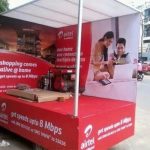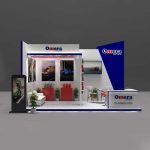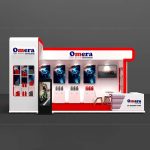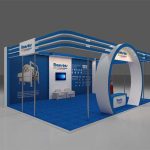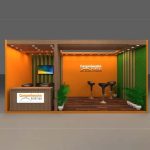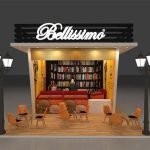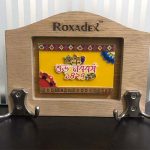Exhibition stall design
Exhibition stall design plays a crucial role in creating an impactful and visually appealing presentation for businesses at trade shows, exhibitions, and other events. An effective stall design can attract attention, engage visitors, and effectively showcase products or services. Here are some key considerations for designing an exhibition stall:
1. Define Objectives: Clearly identify the goals and objectives of the exhibition stall. This could be brand promotion, lead generation, product demonstration, or networking. Understanding the purpose will guide the design process.
2. Branding and Messaging: Incorporate the company’s branding elements, including logos, colors, and taglines, into the stall design. Ensure consistent messaging that communicates the value proposition and key benefits of the products or services.
3. Layout and Flow: Plan the layout of the stall to ensure a logical and intuitive flow for visitors. Consider factors such as traffic patterns, areas for interaction, and clear pathways. Designate spaces for product displays, demonstrations, meeting areas, and information dissemination.
4. Engaging Visuals: Use eye-catching graphics, images, and signage to capture attention. High-quality visuals that showcase products, demonstrate solutions or convey key messages can draw visitors to the stall.
5. Branding Materials: Consider incorporating branded materials such as banners, backdrops, posters, and signage to enhance visibility and create a cohesive visual identity. These materials should align with the overall theme and design of the stall.
6. Lighting: Strategically placed lighting can highlight specific areas, products, or displays within the stall. Use a combination of ambient, accent, and spotlighting to create an inviting and well-lit environment.
7. Product Displays: Showcase products or prototypes in an attractive and accessible manner. Use display stands, shelves, interactive screens, or innovative product demos to engage visitors and create interest.
8. Technology Integration: Integrate technology elements like interactive screens, touch displays, augmented reality, or virtual reality experiences to enhance visitor engagement and create a memorable experience.
9. Branding Collaterals: Have branded collaterals such as brochures, flyers, business cards, and promotional materials readily available for visitors to take away. Ensure these materials are professionally designed and align with the overall stall design.
10. Comfortable Seating and Meeting Areas: Provide comfortable seating areas for visitors to rest, have discussions, or engage in one-on-one meetings. These areas can facilitate networking and longer interactions with potential clients or partners.
11. Interactive Elements: Incorporate interactive elements such as games, quizzes, or digital experiences that allow visitors to actively participate and engage with the stall. This can create a memorable and enjoyable experience.
12. Clear Signage and Information: Use clear and concise signage to guide visitors and provide relevant information about the products or services offered. Ensure that important details such as contact information, social media handles, or website URLs are prominently displayed.
13. Storage and Utility Spaces: Plan for adequate storage and utility spaces within the stall to keep promotional materials, supplies, and personal belongings organized and hidden from view.
14. Sustainability and Eco-Friendly Design: Consider incorporating sustainable materials, energy-efficient lighting, and reusable structures to minimize the environmental impact of the stall design.
Working with professional stall designers or exhibition contractors can help ensure a well-executed and impactful stall design. They can provide expertise in booth construction, graphics production, and overall project management to bring the vision to life.

